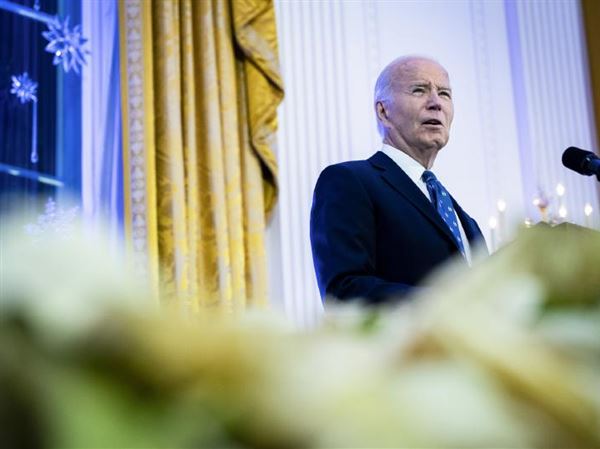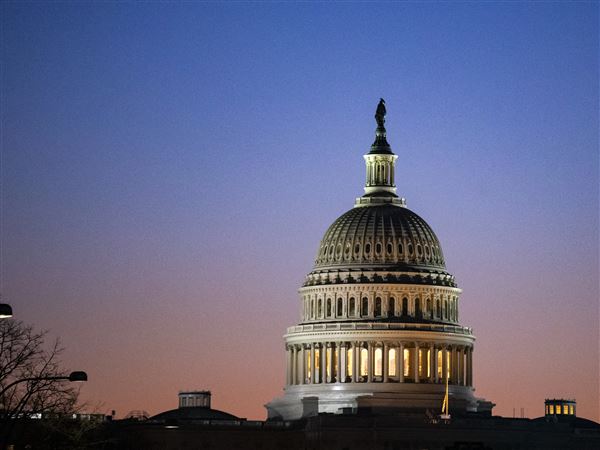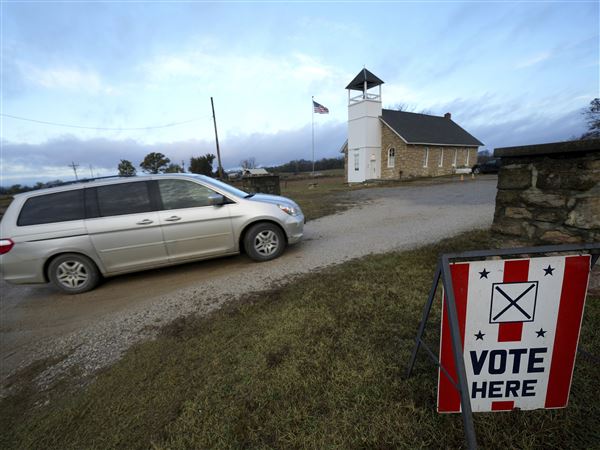Frank Brogan, the State System of Higher Education chancellor, expressed deep concern Thursday over legislation to allow some state-owned universities to leave the system and become state-related schools unless they receive more autonomy.
Mr. Brogan spoke hours after state Sen. Robert Tomlinson, R-Bucks County, said he would introduce legislation Tuesday potentially allowing breakaway schools to join the ranks of Penn State, Temple and Lincoln universities and the University of Pittsburgh.
Mr. Tomlinson said his bill would ensure that relatively healthy campuses able to buy their way out from the system will have the flexibility they need to grow, but the chancellor warned the proposal likely would drive up tuition and fees at universities that leave while weakening those system schools that remain.
The bill, and reaction to it, are further signs of escalating worry over financial and enrollment woes across the 14 member universities, including California, Clarion, Edinboro, Indiana and Slippery Rock universities in Western Pennsylvania.
Mr. Brogan said that in return for joining a group of universities that are not state-owned, the schools would have to amass enough funds to buy back buildings and land from the system, something the chancellor said could total hundreds of millions of dollars at each school.
He said breaking away could prove more daunting than schools realize. And even if they can make a go of it financially, the general public might not appreciate using public funds that way.
"They believe that money is being used to provide them the professors, the support staff, the opportunity today to better their educational experience," Mr. Brogan said. "They sure don't believe it's going to be squirreled away in part by those institutions [to] buy their way to quasi-private status."
Pennsylvania residents attending State System schools pay $6,622 in tuition yearly, a fraction of prices at state-related schools such as Pitt, where base yearly tuition is $16,240. Loss of even one State System school means that many more students would be at risk of paying higher rates.
"I am very concerned about this legislation, and the net effect for both the schools that might become state-related and for those schools that remain," Mr. Brogan said.
Mr. Tomlinson said details of the legislation would be released Tuesday in Harrisburg at an 11 a.m. news conference.
Mr. Brogan said his understanding is that schools with at least 7,000 students would be eligible. That applies to nine of the 14 universities, but since all except for West Chester and Bloomsburg have lost enrollment since 2010, it's unclear how many would have interest in or be positioned financially to consider leaving.
In an interview, Mr. Tomlinson said those schools need greater flexibility to react rapidly to shifts in the higher education marketplace than they have now given the pace of decision-making within the State System's bureaucracy.
He said Pennsylvania's demographics no longer support the status quo, noting that the number of high school graduates west of the Susquehanna River is half what it was in 1990.
The system's enrollment of 112,300 students is down from 2010's peak by 7,200 students -- equal to an entire campus. The declines average 6 percent among the 14 schools but are nearly 20 percent at some individual campuses, including those in Western Pennsylvania.
The smallest university is Cheyney, whose enrollment of 1,212 students has fallen by nearly 24 percent since 2010. The second-smallest is Mansfield, whose enrollment the past three years has dropped 13 percent to 2,988 students.
By contrast, West Chester has grown by 9 percent since 2010 to 15,845 students, making it the largest system school.
Reacting to concerns expressed by some groups, Mr. Tomlinson insisted that the bill he and state Sen. Andy Dinniman, D-Chester County, have drafted is not aimed at shutting down any campuses, as each is important to its region. "We don't want to see any of them close," he said.
But he said those schools that also have faced deep state funding cuts need to "right-size" themselves and better focus resources on areas of growing demand. "The system is going to implode if we don't do something," he said.
Mr. Tomlinson said he'd like to see greater flexibility, for instance, for individual campuses to set tuition and make changes to their curriculum.
But Mr. Brogan said the system without legislation already has taken steps to become more nimble, citing such initiatives as recent decisions to enable member universities to fast-track approval of academic changes and to adjust based on market conditions their tuition for certain programs and their out-of-state rates.
Mr. Tomlinson, a member of West Chester's council of trustees, said existing labor contacts with schools that leave the system would remain in force and that afterward, unions would bargain with those campuses individually rather than with the State System.
"It's my strong belief that there is too much control at the top," he said of the State System. "And there is too little control at the individual colleges."
Bill Schackner: bschackner@post-gazette.com, 412-263-1977 and on Twitter: @BschacknerPG.
First Published: March 6, 2014, 7:11 p.m.
Updated: March 7, 2014, 4:04 a.m.

















